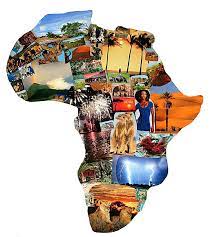Safeguarding Africa's Textile Heritage: Strategies for Sustainable Development
African cultural identity is deeply intertwined with its vibrant textile and fashion traditions. These are not merely aesthetic expressions but significant vehicles for cultural preservation and promotion. This discourse examines strategies for nurturing and celebrating this rich heritage, focusing on sustainable growth and global impact. Key concepts explored include cultural preservation, sustainable development, economic empowerment, and knowledge transfer mechanisms.
1. Promoting Cultural Diversity through Inclusive Representation: Africa's textile heritage encompasses a vast spectrum of styles and techniques, each narrating a unique cultural story. Applying the principles of cultural pluralism, we must avoid homogenization and instead celebrate this diversity. This approach leverages the concept of 'glocalization', adapting global strategies to local contexts, to showcase the unique artistry and cultural narratives of each region, fostering appreciation for the continent's varied heritage and countering any potential for cultural appropriation. This aligns with the anthropological concept of cultural relativism, promoting understanding and respect for diverse cultural practices.
2. Investing in Human Capital Development: Education and Skill Enhancement: The sustainability of African textile traditions hinges on effective knowledge transfer. Implementing educational initiatives, from incorporating textile history into school curricula to establishing specialized vocational training programs, empowers future generations. This aligns with human capital theory, where investment in education and skills leads to increased productivity and economic growth. Furthermore, fostering intergenerational dialogues through mentorship programs facilitates the transmission of traditional techniques and designs, effectively bridging the gap between established artisans and aspiring young talents.
3. Fostering Socioeconomic Empowerment through Entrepreneurship: Sustainable development requires economic empowerment alongside cultural preservation. By providing resources, market access, and business development training, we can support local designers and artisans. This approach draws from the principles of entrepreneurship and community development, fostering inclusive growth that empowers individuals and strengthens communities. The application of Porter's Five Forces model can assist in analyzing the competitive landscape and identifying opportunities for growth within the African textile industry.
4. Facilitating Global Collaboration and Cultural Exchange: In a globalized world, international collaborations are crucial for promoting African textile heritage. Partnerships with international organizations, fashion houses, and museums provide platforms for showcasing African artistry, facilitating cultural exchange, and promoting understanding. This strategy utilizes the concept of global interconnectedness, recognizing the potential for mutual benefit and shared learning. Applying network theory, we can leverage existing relationships and build new connections to strengthen the global visibility and influence of the African textile industry.
5. Adopting Sustainable Practices for Environmental Responsibility: Cultural preservation must be environmentally responsible. Promoting sustainable practices within the textile industry—using eco-friendly materials, implementing ethical production processes, and adopting innovative waste management strategies—safeguards both cultural heritage and the planet. This resonates with the principles of sustainable development, aiming for a balance between economic growth, social equity, and environmental protection. The application of Life Cycle Assessment (LCA) methodologies can help in evaluating the environmental impacts of textile production and identifying areas for improvement.
6. Establishing Cultural Preservation Initiatives: Documentation and Archival Strategies: Systematic documentation of traditional techniques, designs, and oral histories is crucial for preserving intangible cultural heritage. Establishing dedicated cultural centers and archives provides resources for research, education, and exhibition. This strategy applies the principles of cultural resource management, focusing on the systematic preservation and interpretation of cultural artifacts and knowledge. Furthermore, digital archiving of textile designs and oral histories utilizes modern technologies to ensure the accessibility and long-term preservation of this invaluable heritage.
7. Leveraging Technology for Global Outreach and Market Penetration: Digital platforms provide unprecedented opportunities to reach a global audience. Utilizing social media, e-commerce platforms, and digital marketing strategies effectively promotes African textile and fashion, fostering cultural appreciation and market expansion. This strategy leverages the power of digital marketing and social media engagement, maximizing reach and impact. Analyzing website traffic data and social media engagement using web analytics tools allows for strategic adjustments and continuous improvement.
Conclusions and Recommendations: The preservation of Africa’s textile heritage requires a multifaceted approach that combines cultural preservation strategies with economic empowerment and environmental responsibility. By investing in education, promoting sustainable practices, fostering global collaborations, and leveraging technology, we can ensure the longevity and global recognition of this invaluable heritage. Further research should focus on developing innovative sustainable materials and production methods, exploring new market opportunities for African designers, and investigating the potential of digital technologies for preserving and promoting intangible cultural heritage. The impact of these strategies will be measured through economic growth, enhanced cultural pride, increased global visibility, and the preservation of traditional skills and knowledge for future generations. The successful implementation of these strategies will require strong collaboration between governments, educational institutions, businesses, and communities.
Reader Pool: What innovative strategies can be implemented to further enhance the economic viability and global competitiveness of the African textile industry while preserving its unique cultural heritage?




